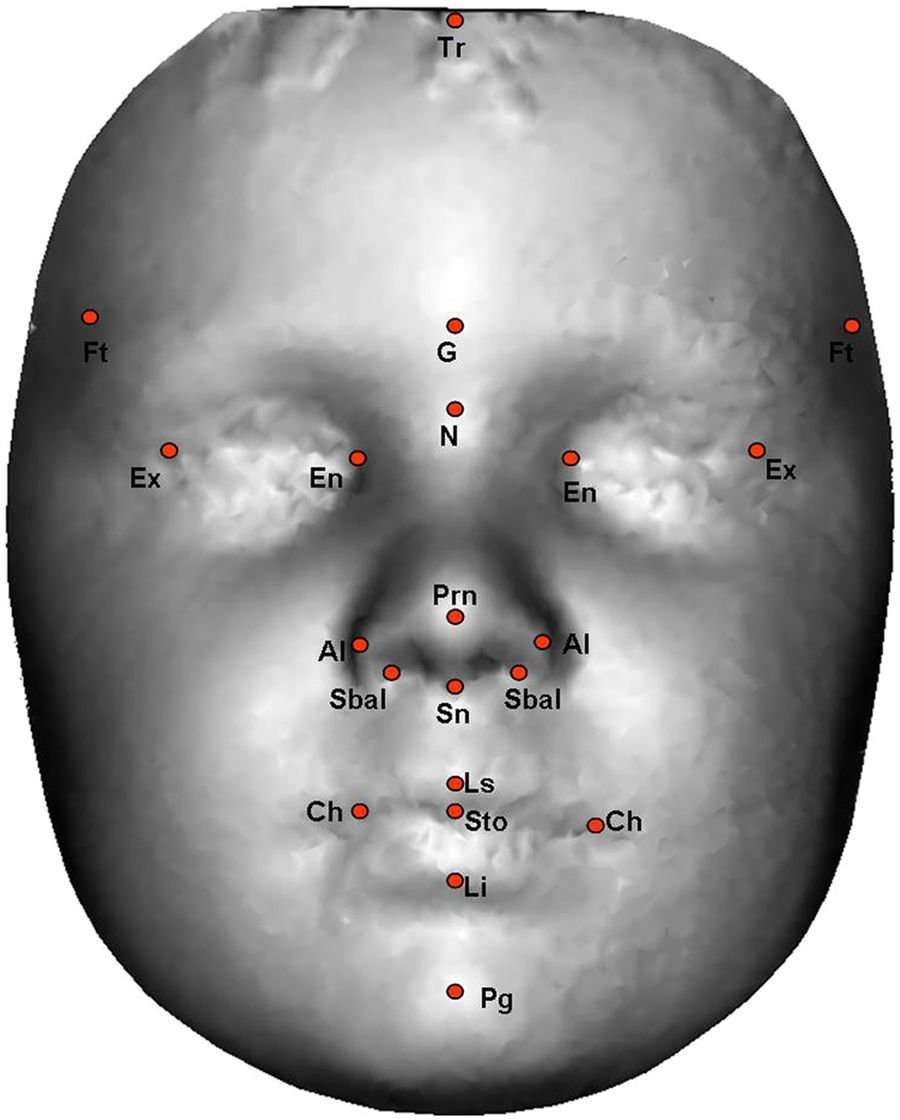According to the Extreme Male Brain theory of autism, there are certain cognitive and behavioural characteristics that manifest more often in men than women, on average, such as a bias for systematic rather than empathic thinking. Autism can be seen as as extreme version of that typical male profile, the theory proposes, possibly caused by prenatal exposure to higher than usual amounts of testosterone in the womb.
A related observation is that exposure to high concentrations of prenatal testosterone leads to the development of “hyper masculine” facial features. It follows that if the Extreme Male Brain theory of autism is accurate, then autistic people will have hypermasculine faces.
A new study in Scientific Reports put this logic to the test, and consistent with the Extreme Male Brain theory, found that autistic girls and boys had more masculine faces as compared with neurotypical control children.
Past research into whether autistic people tend to have stereotypically masculine facial features has been mixed. Women with sub-clinical autistic traits or a diagnosis of autism have been found to have more masculine than average faces, but studies with autistic men have sometimes found no difference from controls, or they’ve found the autistic men to have androgynous rather than hyper masculine features.
For their new paper, the research team led by Diana Tan at the University of Western Australia, deliberately sought to test pre-pubescent autistic and neurotypical children, thus removing the possibility that hormonal changes during puberty might conceal or reverse any facial signs of prenatal exposure to high testosterone levels (as may have been the case in the earlier research involving adults).
Tan and her colleagues also employed a new 3D facial mapping process, tested on 48 neurotypical boys and 53 neurotypical girls, to provide a highly accurate and objective measure of the facial features that most typify a male and female child’s face. Using these features, the researchers’ algorithm was able to correctly categorise the sex of children’s faces with around 98 per cent accuracy.
Next, the researchers deployed their 3D facial mapping algorithm to score the facial features of 54 caucasian autistic boys, 20 caucasian autistic girls and age-matched neurotypical caucasian boys and girls. This showed that the autistic boys and girls had more masculine than usual faces – to use the researchers’ jargon, their faces were hypermasculinised.
Moreover, when the researchers compared the autistic children and control children’s faces on the six facial features (mostly related to the positioning of the nose and upper lip) that most strongly distinguished neurotypcial boys’ faces from girls’ faces, the autistic kids of both sexes were found to have a more masculine score than controls on five of these features.
Finally, among the autistic boys and girls, the more masculinised their faces, the more social and communication difficulties they tended to have, as scored in their diagnostic test for autism.
The sample sizes for this study were relatively small, but the study’s biggest weakness is that it asks us to make a logical leap – high prenatal testosterone levels are known to cause faces to appear more masculine, autistic children have more masculine than average faces (as shown by the new results), therefore high prenatal testosterone levels contribute to autism (in line with the Extreme Male Brain Theory). However, as the researchers’ themselves acknowledge, this study featured no data on the testosterone levels that the children were exposed to prenatally, meaning there could be other explanations for the results. “Further investigation that tracks longitudinal links between early testosterone exposure, postnatal facial morphology and autism phenotype will provide more direct tests of the hypothesised relationships,” they said.
The Extreme Male Brain theory has inspired important research into the causes of autism, but it has also been controversial. Cordelia Fine, the author of Delusions of Gender and Testosterone Rex, cites the theory as an example of contemporary “neurosexism”. And other recent research has uncovered findings that are inconsistent with the theory – for instance, last year a brain imaging study found that, compared with male neurotypical controls, autistic boys and men had resting connectivity patterns that resembled what’s more typically seen in women, while autistic girls and women showed a more masculine neurological profile, lending support “to the notion that autistic spectrum disorder may constitute a disorder of sexual differentiation or androgeny rather than a disorder characterized by masculinization in both genders.”
—Hypermasculinised facial morphology in boys and girls with Autism Spectrum Disorder and its association with symptomatology
Christian Jarrett (@Psych_Writer) is Editor of BPS Research Digest

Origamiface on September 15th, 2017 at 07:49 UTC »
They don't seem to have defined what exactly characterizes a face as masculine. The closest they got was
weinerdawggg on September 15th, 2017 at 03:28 UTC »
Does this suggest that women who produce more testosterone are at a higher risk for having an autistic child?
pettysoulgem on September 15th, 2017 at 02:50 UTC »
I wonder if then there is a higher incidence of lesbianism among autistic girls? That is unless the prenatal androgen effects on sexuality have been debunked in the last couple years.